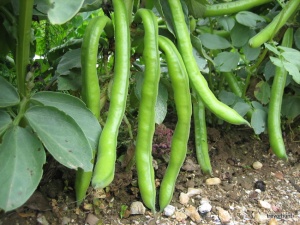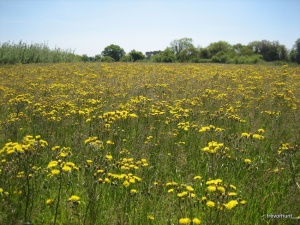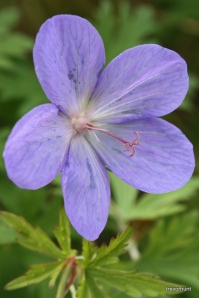Mr MIDDLETON says: Keep quietly on without over-exerting yourself. That is the golden rule for all new gardeners.
JULY-1st WEEK
July is a busy month in the garden even though the bulk of seed-sowing and planting is done. It is the time, too, when the vegetable garden normally looks its best, being filled with maturing and growing crops.
1. Fertilise Onions, Leeks, etc.- The last summer dressing of fertilizer is now given and feeding of crops, such as leeks and onions, is carried out. Both appreciate a watering with soot water. Water onions if weather is dry. Allow to drain a little, then apply liquid manure. Never apply liquid manure to plants suffering from drought, but first soak them with water.
2. Sow Turnips: Uncover Marrows.- Make a sowing of turnips now in the south for storing in the winter. Marrows in frames can be left uncovered.
3. Feed Tomatoes.- Feed outdoor tomatoes. Top-dress those in pots. Top-dress indoor tomatoes. Good soil, preferably from well-rotted turf, should be mixed with sand and peat, and impregnated with fertilizer as a top-dressing for tomatoes and cucumbers.
4. Work on Celery.- Finish planting main crop celery.
5. French Beans, Mint and Tarragon.- Make last sowing of Dwarf French beans outside. These will mature in September. Make new beds of mint and tarragon by transplanting young growths from old beds.
6. On the Potato Patch.- Spray potatoes with Bordeaux mixture to prevent blight. Lift early potatoes as required. Fill land cleared of potatoes with winter greens, or sow mustard as a green manure. Short-horn carrots can also be sown after potatoes.
7. Sowing and Planting.- Plant out winter greens. In the North this should be done without delay. Plant white and purple sprouting broccoli, late Savoy’s, cottager’s kale and January King cabbage. Every delay in planting in the north reduces chances of real success. Lift shallots if ready. The foliage will die down and turn brown.
8. Fruit Culture.- Continue to summer-prune trained fruit trees, first doing cherries, plums, pears and then apples. Red currents and gooseberries should also have their growths tipped.
July is turning out to be a busy time everywhere and not just in the garden. Funny thing blogs. I mean what are they exactly? Who do we right them for? Ourselves? Yes, to a degree of course, but then we share them with the rest of the world to read and make of it as they wish. So when, suddenly, your life is being taken over by issues that cannot be disclosed on a blog for all and sundry to see, and your time is taken up dealing with whatever life happens to throw at you, it makes writing your blog, at best difficult, and at times almost impossible. Giving up would be very easy. But l came downstairs this morning faced with another pile of paperwork to sort out and thought, blow it, l’m writing my blog. I need to escape back into the world l love and share with people the nicer things in my life. One day, all of this crap will be sorted out and put behind us, but right now its not a nice place to be.
As a lot of you know, we are selling our home and returning to the UK. With a fair wind we will know by tomorrow. Its pretty certain so we are having a week or so back in blighty to look for somewhere to live. All very exciting!
We had some friends over yesterday and they left with a bumper bag of goodies from the garden; courgettes, beans, carrots, potatoes, lettuce, tomatoes, radish, mange-tout and eggs.Enough to keep them going for a few days. I love giving friends some veg. It makes all that hard work worth it when you see their faces so appreciative.
Better get things sorted ready for the weekend. We have a good neighbour who is going to look after everything for us while we are gone. I’ll just add a photo of the potatoes we had the other evening. Whoppers! It’s a variety called ‘Cherie’ and are big enough for jacket spuds. Mmmm…my favourite.






































